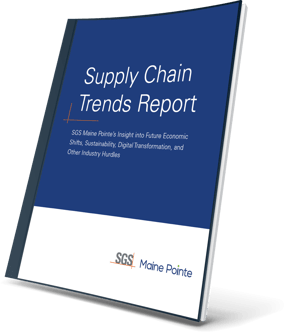Understanding Network Optimization in the End-to-End Supply Chain
When a company contracts or expands operations, its network necessarily changes. It might concentrate resources in the current location or move them to another location or chose a location closer to customers, suppliers, or both.
Network optimization calculates the best configuration, numbers, and locations of your facilities, taking into account your entire company and the entire end-to-end supply chain, including procurement, operations, and logistics. Optimization requires more than simple addition and subtraction; it requires multiple analyses, including a network assessment, capacity planning, geographic optionality, and supply chain design.
Assessment and analytics
To assess its current network, a company needs to look at the entire supply chain, from sourcing to fulfillment, to identify bottlenecks and vulnerabilities. A simulation, especially one based on real-time data, helps not only to pinpoint existing problems but to test out possible solutions.
Among other concerns, the assessment should look at:
- Scalability of space and technology
- Ability to meet greater (or lesser) demand
- Redundancy
- Quality of service
- Potential disruptions as the network expands or contracts.
Capacity planning
Rough-cut capacity planning (RCCP) determines where existing capacity is or may become constrained and where there is excess. When existing capacity is under- or over-utilized, performance drops and often quality is compromised.
If you need more capacity, you can improve what you have, expand what you have, or acquire or build additional space. Capacity optionality evaluates timeline, and access to suppliers, labor, and customers, among other factors, to determine your best course.
Any desire to improve capacity utilization at an existing facility should include an evaluation of the following issues, among others:
- Make vs. buy decisions
- Planned capacity vs. current capacity
- Overall equipment effectiveness (OEE)
- Manufacturing process improvements
- Asset utilization.
Geographic optionality
The decision to acquire or build additional space requires careful consideration. Even building next door to an existing facility should prompt an analysis of labor and resource availability after the expansion and what would happen if a natural or man-made disaster affected either one or both of the facilities.
The need for an analysis escalates when choosing between on-shore, off-shore, or in-shore locations. The need for ally-sourcing, proximity to customers, protection of intellectual property, an educated workforce, future expansion, and many other factors enter into the discussion. Further, a company has to consider fleet management and delivery optimization.
The company also needs a goal based on metrics: If they move the facility, what type of improvement do they expect? What are the numbers? What if they fall behind schedule? How much downtime can they tolerate?
Geographic optionality reduce risk by considering the effect of any change on existing facilities; testing “what if” scenarios; and ensuring that the entire supply chain is considered, not just procurement or logistics.
Supply chain design
A resilient supply chain contains on-shore, off-shore, and near-shore suppliers in several countries, reducing the risk from a single supply chain going to a single country. Ally-sourcing identifies suppliers that can support your commercial and operational goals while also limiting the environmental, social, economic, and political risks.
The supply chain design should be tested periodically to determine, for example:
- Security risks
- Geopolitical stability
- Likelihood of natural disasters
- Ease of doing business
- Proximity to suppliers and/or customers.
Related Resources
Ready to take hold of your supplier performance management?

Talk to us
From rapid sprints for short-term gains to transformation for competitive advantage we are here to get you there.
Schedule a discussion
Submit this form to speak to an SGS Maine Pointe representative.
Prefer a call? (781) 934 - 5569




